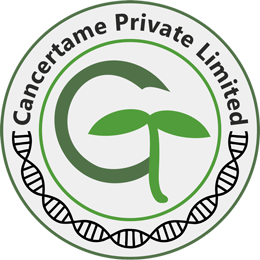Contact Us
Other Articles
2. What is Chemotherapy?
3. What is Radiotherapy?
4. Role of Ayurveda in Cancer Treatment
5. Genesis of Cancer
6. Early Detection of Cancer
7. Diet, Nutrition & Cancer
8. Tobacco Smoking & Cancer
9. Conventional Treatment of Cancer
10. Soft Tissue Sarcoma
11. Mesothelioma
12. Skin Cancer
13. Bone Cancer
14. Leukaemia
15. Chronic Lymphocytic Leukaemia (CLL)
16. Chronic Myelogenous Leukaemia (CML)
17. Acute Lymphocytic Leukaemia (ALL) & Acute Non-Lymphocytic Leukaemias (ANLL)
18. Acute Myelogenous Leukaemia (AML)
19. Lymphoma
20. Multiple Myeloma
21. Breast Cancer
22. Prostate Cancer
23. Oral Cancer (Carcinoma of the Cheek, Lips & Tongue)
24. Carcinoma of the Salivary Gland
25. Carcinoma of the Paranasal Sinus
26. Carcinoma of Pharynx (Oropharynx, Nasopharynx and Hypopharynx)
27. Carcinoma of the Larynx
28. Brain & Spinal Cord Tumours
29. Primary Tumours of the Brain
30. Metastases in the Brain
31. Carcinoma of the Oesophagus
32. Thyroid Cancer
33. Bronchogenic Carcinoma (Lung Cancer)
34. Secondary Cancers of the Lung
35. Carcinoma of the Stomach
36. Liver Cancer
37. Gallbladder & Biliary Tract Cancer
38. Pancreatic Cancer
39. Kidney Cancer (Renal Cell Carcinoma and Nephroblastoma)
40. Urinary Tract (Transitional Cell Carcinoma) & Bladder Cancer
41. Carcinoma of Colon & Rectum
42. Primary Tumours of the Testis
43. Ovarian Cancer (Stromal, Germ Cell and Krukenberg's Tumour)
44. Carcinoma of Uterus
45. Cervix Cancer
46. Paediatric Cancers
47. AIDS Related Cancers
48. Carcinoma of Unknown Primary Site (CUPS)
49. Role of Nutrition in Cancer Treatment
50. Chinese Medicine in Cancer Treatment

Breast cancer is the most common cancer in women. Its risk increases as the age advances and the average age at which carcinoma of the breast is detected is around 60 years. The incidence of breast cancer is higher in America and Europe. Carcinoma of the breast may arise from any part of the breast including the lobes, ducts, fat, lymph tissue and the blood vessels. Carcinoma of the breast arising from a duct is called ductal carcinoma while that arising from a lobe (or lobule) is called lobular carcinoma. Carcinomas of the breast are divided into two major groups, i.e. non-invasive carcinomas and invasive (infiltrating) carcinomas. Non-invasive breast carcinomas include ductal carcinoma in situ, lobular carcinoma in situ and Paget’s disease of nipple. Invasive breast carcinomas include invasive ductal carcinoma, invasive lobular carcinoma, medullary carcinoma, mucinous carcinoma, tubular carcinoma, comedocarcinoma, inflammatory carcinoma, secretory carcinoma and adenoid cystic carcinoma. Invasive ductal carcinoma is the most common cancer of the breast.
Studies have shown that the women, who had early menarche or late menopause, have much higher risk of breast carcinoma due to hormonal factors. It has been observed that there is a higher incidence of the breast carcinoma in those women, who had their first full term pregnancy after the age of 35 years, but lactation has a protective role. A positive family history of the breast carcinoma is a major risk factor. The risk of breast carcinoma is much higher in the woman, whose mother or sister had suffered from the breast carcinoma before menopause. Other risk factors include consumption of alcohol & high fat diet, obesity and exposure to radiation.
Breast carcinoma usually presents as a single, non-tender, firm to hard lump with ill-defined margins. There may be skin retraction, nipple retraction, nipple discharge and enlarged axillary lymph nodes. The breast may become enlarged and tender. Sometimes, the tumour gets fixed to the skin or the chest wall. Carcinoma of the breast usually metastasises to the bones, lungs, liver and the brain.
Staging of the breast carcinoma is done as follows:
-
In stage 0 of the breast carcinoma (carcinoma in situ), the tumour is in a very early non-invasive stage.
-
In stage I, the tumour is localised in the breast and measures less than 2 cm in size.
-
In stage II, the tumour is bigger than 5 cm in size without involving the axillary lymph nodes; or the tumour is smaller than 2 cm in size, but involves the axillary lymph nodes.
-
In stage III-A, the tumour is bigger than 5 cm in size along with involvement of the axillary lymph nodes.
-
In stage III-B, the breast carcinoma involves the chest wall.
-
In stage IV, the breast carcinoma metastasises to distant parts of the body such as the bones, lungs, liver and the brain.
-
Recurrent breast carcinoma is the one that reappears after an apparent recovery in response to the initial treatment.
Procedures used in diagnosis and evaluation of the breast carcinoma include self-examination of the breast, mammography, ultrasound, CT scan and biopsy. All women are advised to learn self-examination of the breast to detect the breast cancer at an early stage.
Disclaimer:
This content is for information and educational purposes only and should not be perceived as medical advice. Please consult a certified medical or healthcare professional before making any decision regarding your health using the content above.
Click here to go back to the list of all Articles
Add New Comment
-
 Vishnu Ramchandra Dadas
Vishnu Ramchandra Dadas
Breast cancer dawa Cancertame Private Limited
Cancertame Private Limited
Dear Vishnu Ramchandra Dadas, Cancertame can be taken in case of Breast Cancer. For recommended dosage kindly send us the patient’s reports at doctors@cancertame.com and for any other information you can write us back at support@cancertame.com Regards, Support Team
16 Aug 2020 -
 Ananta Sharma
Ananta Sharma
My mother was diagnosed with stage 4 breast cancer in 2018. undergone 6 chemo session, 10 radiation and is taking harmonal injections from february 2018. there is no scope for surgery. as per tests her cancer is in metastatic in nature. which medicine as per present date will be suitable for her? Cancertame Private Limited
Cancertame Private Limited
Dear Ananta Sharma, Cancertame should be taken in a recommended dose of 2 capsules, 3 times a day, 8 hours apart (2-2-2), in your mother’s case of metastatic breast cancer, as a palliative treatment only. Cancertame usually takes about 3 months to arrest the further progression of cancer and thereafter starts regressing the size & activity of cancer and will help provide a prolonged quality life in your mother’s case. For any other information, you can write us back at support@cancertame.com Regards, Support Team
18 Jul 2020 -
 Dinesh Pratap Singh
Dinesh Pratap Singh
My wife is suffering from breast cancer since last sep 2017. in sep 2017, during check up, found in metastatic stage. thereafter given her twenty eight numbers of chemotherapy and thereafter breast & head radiation therapy. presently she has sufferimg from crucial body pain especially in chest. which ayurvedic medicine will be useful to her at present time. Cancertame Private Limited
Cancertame Private Limited
Mr. Dinesh Pratap Singh, Cancertame can be taken in your Wife's case in the recommended dose of 2 capsules, 3 times a day (2-2-2) 8 hours apart as a palliative treatment only. for any other query you can write us back at support@cancertame.com Regards, Support team
04 Feb 2020 -
 Anil
Anil
My mother has breast carcinoma 4th stage .sugery completed 21aug 2018.shall i buy this medicine and how can i belive this product. Cancertame Private Limited
Cancertame Private Limited
Mr. Anil, Your query has been replied to by our support team on the Email ID provided by you, for any other query you can write us back at support@cancertame.com Regards, Support Team
05 Sep 2019 -
 Naga Sunitha
Naga Sunitha
My memogram shows right breast birads3 plz suggest me should can i take this medicine to prevent risk im mow 44 years old Cancertame Private Limited
Cancertame Private Limited
Ms. Naga Sunitha, Your query has been replied to by our support team on the Email ID provided by you, for any other query you can write us back at support@cancertame.com Regards, Support Team
01 Sep 2019 -
 Sultana Shaikh
Sultana Shaikh
Pl call urgently medicine need Cancertame Private Limited
Cancertame Private Limited
Ms. Sultana Shaikh, Your query has been replied to by our support team on the Email ID provided by you, for any other query you can write us back at support@cancertame.com Regards, Support Team
27 Aug 2019



Breast Cancer